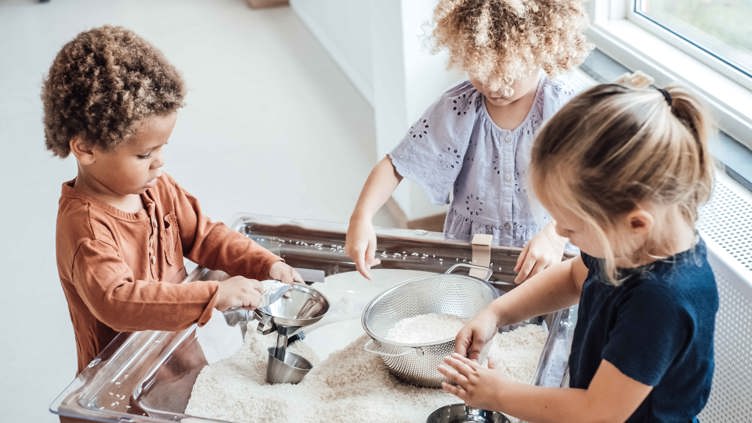Just like you, we place great value on healthy and varied nutrition. We introduce your child to different flavors, which is important for a healthy eating pattern. At most locations, a household staff member prepares a fresh, warm lunch every day. Where cooking is not done, the meal is either delivered or prepared by Kindergarden chefs at a central location and then distributed. And then we sit down at the table – always together, because seeing others eat encourages eating!
The convenience of a warm lunch
A fresh, warm meal at midday (for all children from one year old) is naturally healthy. Moreover, it is a great solution for you as a parent. After a busy workday, you can opt for an easy meal in the evening. Your child has already consumed a large part of their prescribed nutrition (including fruit and dairy) for the day. Therefore, a nutritious sandwich in the evening will suffice. Convenient, right?
Fresh vegetable snacks for the little ones
Every day we offer your child fresh fruit. In consultation with you, we also provide vegetable snacks when your child is ready for them. You don't need to bring these snacks yourself; we prepare them.
Homemade snacks for babies (from 4 months)
- Coarsely pureed vegetable snacks such as cauliflower, green beans, carrots, and broccoli
- One type of vegetable to get used to different flavors
Homemade snacks for babies (6-8 months)
- Finely mashed vegetable snacks with 2 flavors, possibly supplemented with some potatoes, white rice, or pasta
- The vegetable snacks become more filled and coarser in texture. Eventually, we supplement them with food from the warm lunch of that day. This creates a natural transition to the warm lunch.
Warm lunch from 1 year old
- As many organic seasonal ingredients as possible that fit within responsible nutrition according to the Dutch Nutrition Center's 'De Schijf van Vijf'. We pay close attention to what children from 1 year old can eat and take that into account in the menu.







